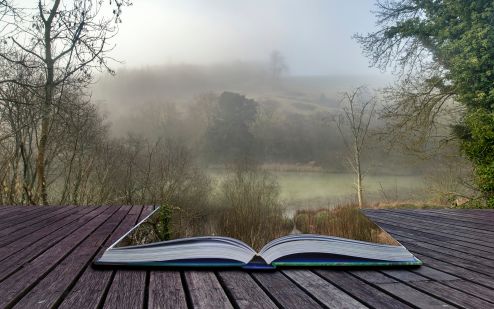How to write a novel: tricks of the trade
Step 6: Award-winning novelist, Lucy Atkins, shares some style basics, from digging deeper into characters’ feelings and voices, to keeping things simple

You should now be well into scribbling away at your ‘crap first draft’, so it’s time to look at some stylistic nitty-gritty. It pays to understand a few basic ‘style rules’ as you write. These are there to be broken, but only knowingly. If you are flouting them inadvertently, then your novel is highly likely to lose impact.
Probably the best-known advice to writers is, ‘show don’t tell’. This means that instead of telling the reader how your character is feeling, you show them these things, using carefully chosen, concrete details. For instance, ‘Joe was nervous’ would change to, ‘A bead of sweat trickled down Joe’s back as he glanced over his shoulder…’ These details fire energy into a novel.
Be true to the character
Another thing to watch out for is being consistent about your viewpoint and tone. Whether your narrator is an eight-year-old girl or a gnarled gangster, you’re going to have to engage with the world as your character would. This means using words, phrases and concepts that they would use.
Switching between characters’ perspectives halfway through a paragraph – or even a chapter – is another tactic to think about carefully. If you change viewpoints too often, a reader can become disconnected from the book. Try switching between two or more narrators in alternating chapters; flipping in and out of different characters’ heads paragraph by paragraph takes great skill and you will risk not taking your reader with you.
Axe the adjective
So much of my writing life is spent reworking. Moments before I submitted the final version of The Night Visitor, I still had my red pen out, slashing unnecessary adjectives. It’s tempting to sprinkle your prose with descriptive words and phrases in order to sound more ‘literary’, but overuse of these can have the opposite effect. Try looking at a sentence you’ve written that has a few adjectives. Now rewrite it without them. Almost always, it becomes more vivid.
These are just a few style basics to be getting on with, but don’t get too hung up on writing beautiful sentences, yet. The main thing is to put something – anything – onto the page – and then take out your red pen. Stylistic success, above all, lies in confidence and authenticity. George Orwell, author of 1984, advised writers to ‘never use a complicated word when a simple one will do’. I have this, and his five other rules for writing, taped to my fridge door. I first printed them out more than 20 years ago and they are the best rules I know. Writing well is an ongoing craft, a process of exploration and learning.
Lucy Atkins is running our FREE ‘how to write a novel’ course on https://www.instagram.com/psychologiesmagazine/ every Friday at 1.30pm
Lucy is an award-winning author, journalist, Sunday Times book critic and Costa Prize judge who tutors at Oxford University’s Creative Writing Master’s degree course. Lucy has written four novels: The Missing One (£7.99), The Other Child (£7.99) and The Night Visitor (£14.99, all Quercus) and her fourth novel, MAGPIE LANE, a literary thriller in which the daughter of an Oxford College Master goes missing, is just out – to rave reviews. Buy the book here: https://blackwells.co.uk/bookshop/product/Magpie-Lane-by-Lucy-Atkins-author/9781786485571
@lucyatkinswriter
www.lucyatkins.com
Photograph: iStock









